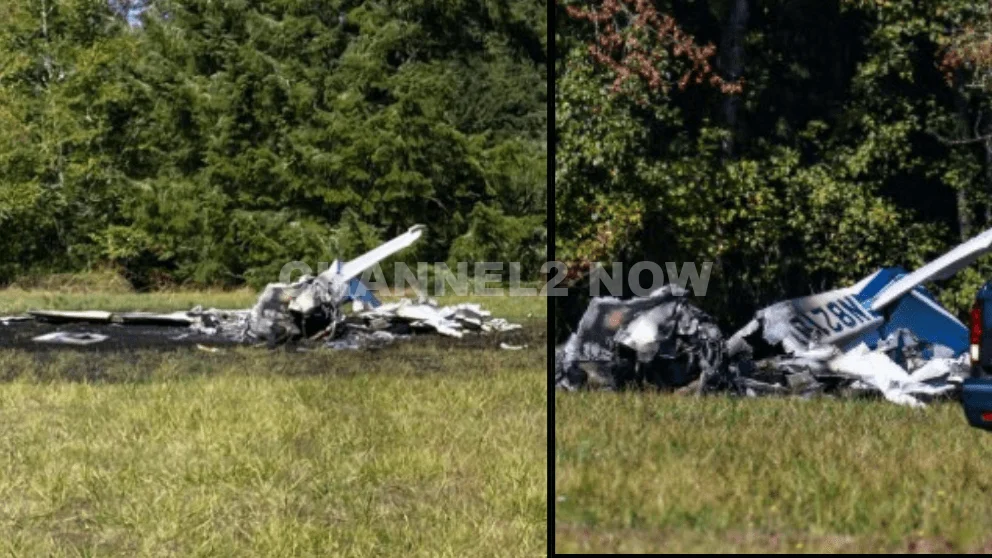BATTLE GROUND, WA – A federal investigation is underway after a fiery plane crash claimed the life of a local pilot, Ken Shaffer, on Friday afternoon near Goheen Airport in Battle Ground. The single-engine Cessna 172 went down in a field just outside the airport perimeter, immediately becoming engulfed in flames upon impact. The National Transportation Safety Board (NTSB) and the Federal Aviation Administration (FAA) have been dispatched to determine the cause of the tragic accident that has shaken the local aviation community.
The Final Flight of Ken Shaffer: A Tragic Crash
The fatal incident occurred shortly after 1:00 p.m. on Friday, September 26, 2025. According to the Clark County Sheriff’s Office, the aircraft, a widely used Cessna 172, crashed under circumstances that are still being investigated. Witnesses and initial observations from the scene suggest the plane may have entered a steep, near-vertical descent before impacting the ground with moderate energy.
Emergency responders from Clark-Cowlitz Fire Rescue were on the scene within seven minutes of the 911 call. They were met with a fully engulfed aircraft and worked quickly to extinguish the blaze. Despite their rapid response, first responders confirmed that the pilot, identified as Ken Shaffer, did not survive. He was the sole occupant of the aircraft.
Wreckage at the crash site showed the plane’s fuselage was severely damaged from the force of the impact and the subsequent fire. The death of Ken Shaffer has cast a somber mood over Goheen Airport, a hub for local pilots and aviation enthusiasts.
Federal Investigation into the Death of Ken Shaffer
Determining the cause of the crash is now the responsibility of federal investigators. The process is a meticulous and multi-faceted one, involving several agencies.
- The Clark County Sheriff’s Office has secured the crash site to preserve evidence and is coordinating with federal authorities.
- The Federal Aviation Administration (FAA) will investigate aspects related to the aircraft’s maintenance history, the pilot’s certification and medical records, and any potential regulatory compliance issues.
- The National Transportation Safety Board (NTSB) is the lead investigative body and is responsible for determining the “probable cause” of the accident. NTSB investigators will painstakingly examine the aircraft’s structure, engine, and flight control systems. They will also analyze witness statements, weather data, and any available flight path information.
While preliminary observations have raised the possibility of a stall/spin event, officials have been clear that this is only one of many potential scenarios and not an official conclusion. The investigation into the crash that killed Ken Shaffer will likely take several months to a year to complete before a final report is issued.
Remembering Pilot Ken Shaffer
While the official investigation focuses on the mechanics of the crash, the local community is mourning the loss of a fellow aviator. The world of general aviation, centered around smaller airports like Goheen, is a notoriously tight-knit community. The loss of any pilot is felt deeply by all who share a passion for flight.
Ken Shaffer was part of this fraternity, a group of individuals who understand both the unique freedom of flying and the inherent risks that come with it. His death serves as a somber reminder of the unforgiving nature of aviation, where even a small mechanical issue or a momentary lapse in judgment can have catastrophic consequences. As investigators work to provide answers, the friends and colleagues of Ken Shaffer are left to remember the man who loved to fly.
Understanding the Dangers of a Stall/Spin Event
The preliminary theory mentioned by officials—a stall/spin event—refers to a specific and dangerous aerodynamic situation.
- A stall occurs when the wings of an aircraft exceed their “critical angle of attack,” causing the smooth airflow over the wings to become turbulent. This results in a sudden loss of lift, causing the aircraft to descend. It is not, as commonly misunderstood, a failure of the engine.
- A spin is an aggravated stall that can occur if one wing stalls before the other, leading to a state of autorotation where the aircraft descends in a corkscrew-like helical path.
Stall/spin events are particularly dangerous at low altitudes, such as during takeoff or landing approaches near an airport, because the pilot has very little time and altitude to execute the precise control inputs needed to recover. The NTSB investigation will carefully analyze the wreckage to look for evidence that might confirm or rule out this scenario as a factor in the death of Ken Shaffer.


Leave a Reply